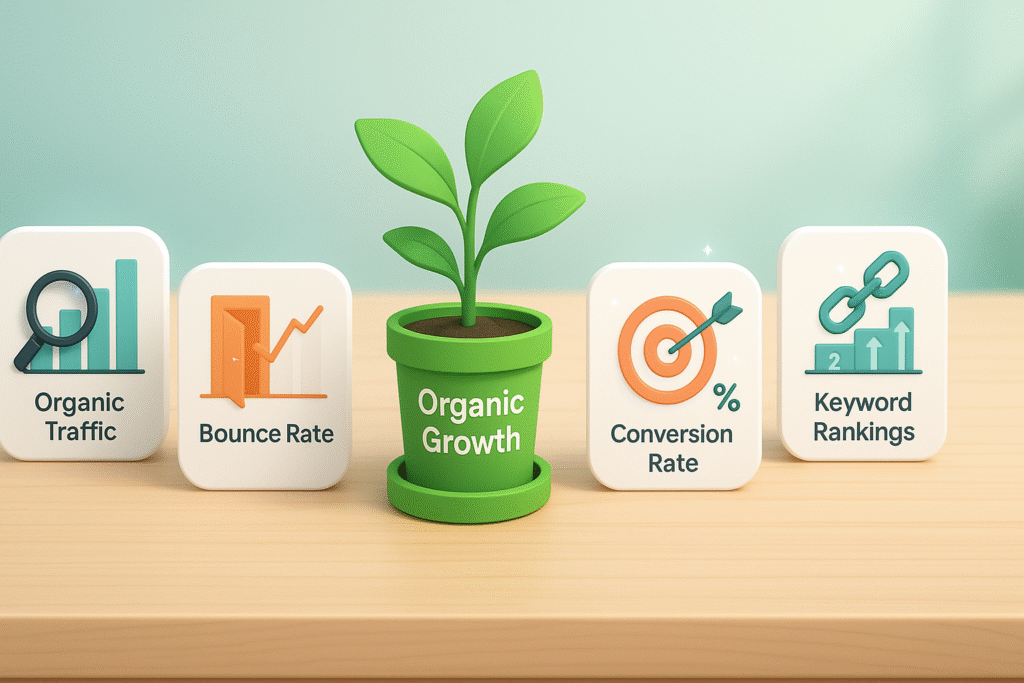In today’s digital landscape, small businesses face the challenge of establishing a robust online presence without depleting their limited marketing budgets. Search Engine Optimization (SEO) emerges as a cost-effective strategy to enhance visibility, attract targeted traffic, and ultimately drive a strong return on investment (ROI). This comprehensive guide delves into how low-cost SEO can be a game-changer for small businesses, offering practical insights and strategies to maximize impact without significant financial outlay.
Table of Contents
Understanding Low-Cost SEO
Low-cost SEO refers to implementing search engine optimization strategies that require minimal financial investment but can yield substantial results. It focuses on optimizing various aspects of a website and online presence to improve search engine rankings, attract organic traffic, and enhance user experience. By leveraging free or affordable tools and techniques, small businesses can compete effectively in the digital marketplace.
The ROI Potential of Low-Cost SEO
1. Increased Organic Traffic
By optimizing website content and structure, businesses can improve their visibility on search engines, leading to increased organic traffic. This traffic comprises users actively searching for products or services, making them more likely to convert into customers.
2. Enhanced Brand Credibility
High search engine rankings often correlate with perceived credibility. When a business appears at the top of search results, it instills trust among potential customers, enhancing brand reputation.
3. Cost Efficiency
Unlike paid advertising, which requires continuous investment, low-cost SEO focuses on organic growth. Once established, it can maintain and even improve rankings over time with minimal ongoing costs.
4. Long-Term Results
SEO is a long-term strategy. While it may take time to see significant results, the benefits are enduring. Consistent efforts in SEO can lead to sustained visibility and traffic.
Implementing Low-Cost SEO Strategies
1. Keyword Research and Optimization
Identifying and targeting relevant keywords is fundamental. Utilize free tools like Google Keyword Planner or Ubersuggest to find keywords with high search volume and low competition. Incorporate these keywords naturally into website content, meta descriptions, and headers.
2. Quality Content Creation
Developing informative and engaging content attracts and retains visitors. Regularly update your website with blog posts, articles, or guides that address common customer queries and provide value.
3. On-Page SEO
Optimize individual web pages to improve search engine rankings. This includes using descriptive URLs, optimizing title tags and meta descriptions, and ensuring proper use of header tags.
4. Mobile Optimization
With the increasing use of mobile devices, ensuring your website is mobile-friendly is crucial. Responsive design enhances user experience and is favored by search engines.
5. Page Speed Improvement
Website loading speed affects user experience and SEO rankings. Compress images, leverage browser caching, and minimize code to enhance site speed.
6. Local SEO
For businesses targeting local customers, optimizing for local search is essential. This includes creating and verifying a Google My Business profile, encouraging customer reviews, and ensuring consistent NAP (Name, Address, Phone Number) information across directories.
7. Link Building
Acquiring backlinks from reputable websites signals authority to search engines. Engage in guest blogging, collaborate with industry influencers, and participate in relevant forums to build quality backlinks.
8. Utilize Free SEO Tools
Leverage free tools like Google Analytics and Google Search Console to monitor website performance, track traffic sources, and identify areas for improvement.
Measuring the Success of Low-Cost SEO

To assess the effectiveness of your SEO efforts, monitor key performance indicators (KPIs) such as:
- Organic Traffic: Track the number of visitors arriving via search engines.
- Bounce Rate: Measure the percentage of visitors who leave after viewing only one page.
- Conversion Rate: Evaluate the percentage of visitors who complete desired actions, like making a purchase or filling out a contact form.
- Keyword Rankings: Monitor the positions of targeted keywords in search engine results.
- Backlink Profile: Assess the quantity and quality of inbound links to your website.
Common Challenges and Solutions
1. Keeping Up with Algorithm Changes
Search engine algorithms frequently update, affecting rankings. Stay informed by following reputable SEO blogs and forums to adapt strategies accordingly.
2. Content Creation Constraints
Limited resources can hinder content production. Repurpose existing content, encourage user-generated content, or utilize freelance writers to maintain consistency.
3. Technical SEO Issues
Technical aspects like broken links or duplicate content can impact SEO. Conduct regular site audits using tools like Screaming Frog or SEMrush to identify and rectify issues.
Conclusion
Low-cost SEO offers small businesses a viable path to enhance online visibility, attract targeted traffic, and achieve a strong ROI. By implementing strategic optimizations, creating valuable content, and leveraging free tools, businesses can compete effectively in the digital arena without significant financial investment. Consistent efforts and adaptability are key to sustaining and improving SEO performance over time.
Frequently Asked Questions (FAQs)
Q1: How long does it take to see results from low-cost SEO efforts?
A1: SEO is a long-term strategy. Typically, noticeable improvements can be seen within 3 to 6 months, depending on the competitiveness of the industry and the consistency of optimization efforts.
Q2: Can I handle SEO on my own, or should I hire a professional?
A2: Many aspects of SEO can be managed independently, especially with the availability of free tools and resources. However, for more complex issues or to save time, consulting with an SEO professional can be beneficial.
Q3: Is low-cost SEO effective for all types of businesses?
A3: While low-cost SEO is particularly beneficial for small and local businesses, its principles can be applied to various business types. The effectiveness depends on the implementation and consistency of SEO practices.
Q4: How important are backlinks in low-cost SEO?
A4: Backlinks are crucial as they signal authority and trustworthiness to search engines. Focusing on acquiring high-quality backlinks through ethical practices can significantly enhance SEO performance.
Q5: What are some common mistakes to avoid in low-cost SEO?
A5: Common pitfalls include keyword stuffing, neglecting mobile optimization, ignoring technical SEO issues, and producing low-quality content. Avoiding these mistakes is essential for effective SEO.



